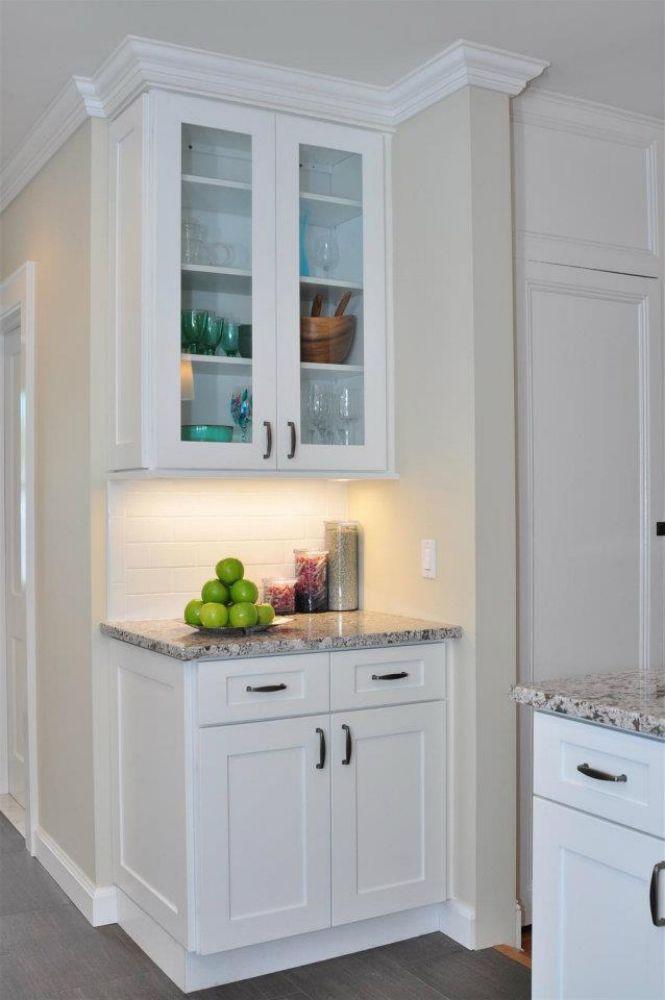Introduction to Forevermark Petit Brown Cabinets
When choosing cabinetry, color tone is one of the most important design decisions. The tone of cabinets sets the mood for the entire kitchen or bathroom space and dictates how easily other design elements—such as countertops, backsplashes, and flooring—can be coordinated. Among the many options available, Forevermark Petit Brown Shaker cabinets have grown in popularity because of their rich finish and timeless design. A common question homeowners ask is: Is Petit Brown a warm or cool tone? To answer that, we need to explore the characteristics of warm versus cool tones and analyze how Petit Brown fits into this spectrum.
Understanding Warm vs. Cool Tones in Interior Design
Before identifying Petit Brown’s place on the tone spectrum, it helps to understand the distinction between warm and cool tones.
-
Warm tones include shades with undertones of red, yellow, or orange. They create cozy, inviting spaces and often work well in traditional or rustic designs.
-
Cool tones lean toward blue, gray, or green undertones. These tones tend to create calm, sleek, and modern environments.
-
Neutral tones fall in between and can swing either warm or cool depending on the surrounding elements.
Cabinetry, especially with rich wood or painted finishes, may not always sit firmly in one category but can exhibit characteristics of both.
The Visual Characteristics of Petit Brown
Forevermark Petit Brown features a deep, earthy brown finish that immediately conveys warmth. The underlying red undertones make the color rich and inviting, placing it firmly in the warm tone category. Unlike lighter brown shades that can sometimes appear neutral, Petit Brown has a distinct warmth that enhances coziness in any space. Its intensity allows it to anchor a room, creating depth and sophistication.
Why Petit Brown Leans Warm
Several design elements highlight why Petit Brown is considered a warm tone:
-
Red Undertones: The subtle reddish hues within the brown finish emphasize warmth rather than neutrality.
-
Depth of Color: Darker browns often lean warm due to their association with natural wood and earthy tones.
-
Contrast Potential: When paired with cool elements like stainless steel or gray stone, Petit Brown provides a warm counterbalance.
These characteristics make Petit Brown a natural fit for homeowners who want a welcoming and grounded kitchen design.
How Warm Tones Affect Kitchen Atmosphere
Warm tones like Petit Brown influence the mood of a space. In kitchens, they:
-
Make the environment feel cozy and inviting.
-
Encourage socialization, as warmer tones are psychologically linked to comfort.
-
Provide a sense of richness and sophistication, especially when combined with complementary finishes.
For homes where the kitchen serves as the heart of daily activity, warm tones like Petit Brown create an atmosphere that feels timeless yet approachable.
Pairing Petit Brown with Cool-Toned Elements
Even though Petit Brown is a warm tone, it blends beautifully with cool-toned accents. This is one of the reasons it is so versatile in design. For example:
-
Countertops: White quartz with gray veining balances Petit Brown’s warmth with a modern, cool contrast.
-
Backsplashes: Glass or ceramic tiles in shades of blue, gray, or silver create visual interest against the cabinets’ rich brown finish.
-
Appliances: Stainless steel appliances stand out against Petit Brown, making the cabinetry appear even warmer by comparison.
This balance prevents a kitchen from feeling too heavy or dark, which can sometimes occur with warm, deep-toned cabinetry.
Complementary Colors for Petit Brown
Designers often use color theory to determine which hues complement cabinetry. For Petit Brown, the following options work particularly well:
-
Warm Complements: Beige, cream, and gold accents enhance Petit Brown’s natural warmth.
-
Cool Complements: Soft grays, muted blues, or slate accents balance the tone for a more modern vibe.
-
Natural Complements: Stone textures, light woods, or greenery create harmony with Petit Brown’s earthy character.
These combinations ensure that Petit Brown remains flexible, fitting into both traditional and transitional kitchen designs.
Lighting and Tone Perception
The way Petit Brown appears in a room can change depending on lighting. In natural light, the warm undertones are more visible, making the cabinetry look vibrant and rich. In artificial lighting, especially with cooler LED bulbs, Petit Brown may appear slightly muted, giving off a more neutral impression. For homeowners who want to emphasize its warmth, warmer lighting options (such as soft white bulbs) are recommended.
The Role of Texture and Finish
Beyond color, the finish of Petit Brown cabinets enhances their warm tone. The smooth finish reflects light subtly, giving depth to the cabinetry without overwhelming the room. The Shaker style’s flat panels also emphasize simplicity, allowing the color to take center stage. This combination highlights warmth without adding unnecessary visual clutter.
Balancing Warmth in Modern Kitchens
Modern kitchen designs often lean toward cool tones, but that doesn’t mean warm cabinetry like Petit Brown can’t fit in. In fact, Petit Brown provides an essential balance of warmth in contemporary spaces that might otherwise feel too cold. When paired with sleek countertops, minimalist hardware, and modern lighting, Petit Brown bridges the gap between traditional warmth and modern coolness, creating a harmonious blend of styles.
Why Warm Cabinets Remain Popular
While design trends shift frequently, warm-toned cabinets like Petit Brown continue to remain popular. The reason lies in their timeless versatility. Unlike bold colors that can feel dated after a few years, warm browns offer enduring appeal. They work equally well in rustic, farmhouse, transitional, and even modern kitchens. Petit Brown, in particular, hits the sweet spot by being warm but not overly rustic, making it a flexible choice for homeowners with evolving tastes.
Conclusion
Forevermark Petit Brown cabinets are unmistakably a warm tone due to their rich brown finish and subtle red undertones. Their warmth creates an inviting and cozy atmosphere, making them a popular choice for homeowners seeking timeless style. At the same time, Petit Brown pairs seamlessly with cool-toned countertops, backsplashes, and appliances, offering design flexibility that appeals to both traditional and modern tastes. By striking this balance, Petit Brown demonstrates why it remains one of the most versatile and enduring cabinetry choices in Forevermark’s lineup.
Read: Can Forevermark Petit Brown Cabinets Support Hidden Outlets?
Read: Are Wine Racks Available In The Forevermark Petit Brown Collection?
Frequently Asked Questions
Q1: What undertones does Forevermark Petit Brown have?
A: Petit Brown has subtle red undertones, which give it a warm and inviting appearance.
Q2: Can Petit Brown cabinets work in kitchens with cool color schemes?
A: Yes, Petit Brown pairs beautifully with cool elements like gray countertops, stainless steel appliances, and blue accents.
Q3: Does lighting affect how Petit Brown looks?
A: Absolutely. Natural light enhances its warm undertones, while cooler artificial light can make it appear more neutral.
Q4: Are warm-toned cabinets like Petit Brown still in style?
A: Yes, warm tones remain timeless because they add coziness and richness to kitchens, making them a lasting design choice.
Q5: Is Petit Brown better suited for traditional or modern designs?
A: While it leans warm and works naturally in traditional settings, Petit Brown is versatile enough to fit in modern or transitional kitchens as well.

